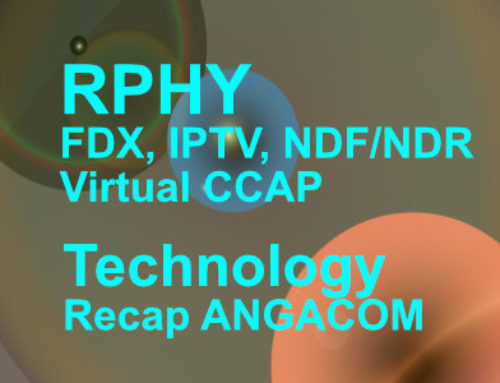CPAT Flex Platform Finds Ingress Fast
Ingress detection makes leap from boring to cool on the geek-o-mometer!
This is the third of my SCTE Cable-Tec Expo 2011 cool product show reviews for those of you unable to attend or too busy with booth duty. I tried to stop and or look at every booth but might have missed a product. If that’s the case please get in touch with me and let me know why your product deserves a review too.
I admit that while I help my clients better understand the sources and negative impacts of RF ingress on DOCSIS in a cable plant, I have never found leakage/ingress detection itself particularly high-tech. That was until Daniel Babeux of VGI Solutions gave me a demo of their CPAT Flex Platform. The live demo was straightforward which made it so convincing and intriguing. It consisted of a truck-mount magnetic antenna that connected into a little green box (the brains behind the operation), and a piece of coax cable seemingly chewed upon by a squirrel. The latter connected back into the CATV plant. The awesome part of the demonstration was seeing the location of the antenna appear on Google maps at the Georgia Convention Center in Atlanta, GA. Next when the damaged coax was replaced, the ingress point on the map disappeared along with magnitude of the ingress entering the plant.
So I admit, my synapses were rapidly firing trying to piece this together. How does the CPAT system know which truck is close to the ingress? How does it overlay it on the map? I mean you could have a number of trucks rolling around looking for ingress, but geo-locating them and keeping track of each one has always been a challenge to manage. Then you have the magnitude of the ingress. This is the coolness of the technology. CPAT has some intellectual property in their system that is creating and tagging special signal in the 5-45 MHz, 108-138 MHz, and 700-800 MHz bands. This gives the system coverage in the upstream, mid-band, and LTE bands. VGI claims that with the proper number of trucks equipped with their solution an operator would have over 90% plant leakage coverage within one-quarter – and that would eliminate the need for dedicated FCC CLI driveouts!
The CPAT architecture does require a headend server to receive the RF id tags coming back in from the remote transmitters. The system also integrates with Workforce Management (WFM) systems and remote devices such as laptops, PDAs and iPADs. See architecture below:
Here is a list of the key features:
The CPAT FLEX System comprises three main components:
[list type=”list2″]
- Vehicle-based modules
- Headend-based receiver (for ingress detection purposes)
- CPAT v.4 System Software, a Web-based application running on a dedicated server
[/list]
CPAT Autonomous Recording Device (ARD4), the Autonomous Recording Device (ARD4) is the ‘brain’ of the CPAT FLEX monitoring solution. The ARD4 is installed in the operator’s service/maintenance vehicles. The ARD4 feature set supports:
[list type=”list2″]
- Connectivity to other vehicle-based devices (laptop, routers, etc.)
- Wireless telecommunications activities
- Real-time event data management/recording
- Vehicle telematics such as GPS localization and On-Board Diagnostics (OBD-II) functions
[/list]
Headend-based component
[list type=”list2″]
- Ingress receiver (IRX1)
- The IRX1 (US Patent Pending : 13/187545 – CAN Patent Pending : 2,746,924) has a CPU that controls 4 distinct ingress monitoring module blocks running in parallel
- Each block is equipped with 8 RF monitoring input ports, totalling 32 RF ports per IRX1
- Return node combining on the IRX1 input ports could also be accommodated, depending on the upstream RF level available at the HE/Hub location.
[/list]
To wrap up, I selected the CPAT Flex Platform as one of the best in show at SCTE’s Cable-Tec Expo because it has modernized ingress/leakage detection. My entire demo was performed live using an iPAD with damaged coax cable. I cannot attest to how well it performs in a live plant as I have not used it first hand, but would look forward to the chance to see a system where it is installed and/or receive feedback from those who are using it.






Hi Brady,
Thanks for your technical article on C-PAT, we are doing on this moment the first drive tests in Belgium and Holland to measure leakage and have found some large leakage points on the network, we still have to look for the real cause of these leakages.
RGDS
Ivo
Great to hear, Ivo. Please keep us updated on the product.
Also good to hear from you.
-Brady
Hi Brady,
I do not know if you received my message via ctchatter.
If wanted for a test, I can send you a daily report. Just mail me for details.
Willy.